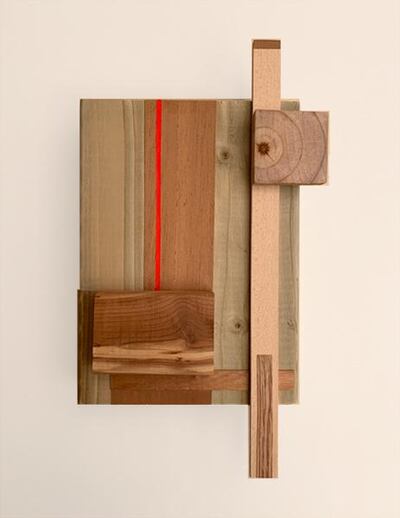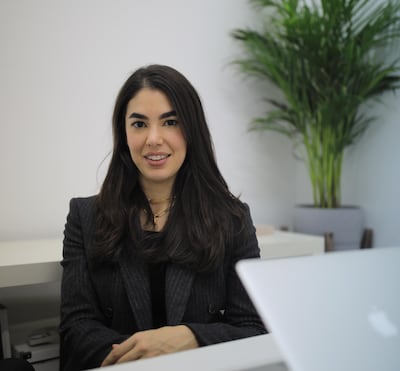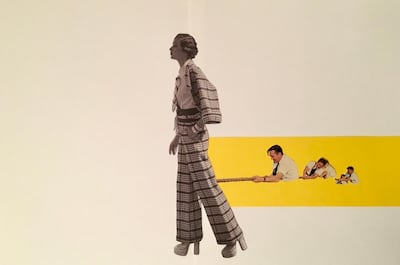With the UAE art season under way, Artsy, a leading online marketplace for art, has launched two initiatives that focus on the Mena region.
Middle East Galleries Now
The first, Middle Eastern Galleries Now, is an online presentation with at least 21 galleries from the UAE, Lebanon, Jordan, Egypt and Palestine, including Carbon 12, 1x1 Art Gallery, Tabari Art Space, Lawrie Shabibi, Q0DE, Art d’Egypte and Zawyeh Gallery.
Akin to an art fair, the virtual exhibition, which opens on Monday and runs until the end of the month, will include booths for visitors to browse through and allow them to buy artworks directly from the galleries.
"This is the first time Artsy has staged an Artsy-led exclusive event for our Middle Eastern gallery partners," Dustyn Kim, the platform's chief revenue officer, tells The National. She says with the impact of the pandemic on international travel, the sale could provide support for the galleries and bolster their visibility on the platform, which has more than two million registered collectors.
“With this event, we’re providing a much-needed online timed event for these galleries to showcase their programming and ultimately help them make sales to international collectors, as well as open up a new pool of buyers to them,” Kim says.
Artsy has staged curated collections of Middle Eastern art in the past, though the latest initiative hints that more galleries in the region may be embracing the online marketplace, or at least, are curious to see how profitable it can be.
One example is 1x1 Art Gallery in Dubai, which is working with the platform for the first time. “I have been in conversation with Artsy for many years, but have always resisted,” says 1x1’s founder Malini Gulrajani. “Now I feel collectors are more open to buying online.”
Physical art fairs are usually where big sales happen for galleries and, Gulrajani says, her concern is whether the same trend is true in the virtual realm. “From my experience, it has been difficult to sell high-priced works online, but I have been hearing from galleries and from the people at Artsy that this has changed over the last year and big ticket items are doing well.”
Another Dubai gallery, Carbon 12, is also participating in the event with new works by Emirati artist Sarah Almehairi. Co-founder Nadine Knotzer recalls that the gallery was one of Artsy’s early adopters and says its return to the platform is driven by the hope “to increase online exposure for the artists and the gallery” and to establish new contacts.
It seems both galleries are putting Artsy to the test to see if Middle Eastern art sales could flourish on the platform, which is based in the US and has often gravitated towards American and European markets. “Collectors have been very eager to add [Almehairi’s] work to their collections in the Middle East,” Knotzer says. She believes Middle Eastern Galleries Now could allow the gallery “to have a larger audience learn about her practice”.
“We are definitely interested to see the reach of Artsy in this case.”
Middle Eastern Galleries Now opens just ahead of Art Dubai, which will push through with a scaled-down physical fair at the end of the month. This year, Carbon 12 is not returning to Art Dubai as an exhibitor. Knotzer explains the gallery opted to focus on its programme, including a new show with one of its longstanding artists Monika Grabuschnigg and other online initiatives. “An online platform can in no way be a replacement for either a proper exhibition or a serious art fair, [but] in times like the ones we are facing, we galleries should be very thoughtful about the projects, fairs and exhibitions we commit to,” she says.
Fundraising exhibition with ArteEast
Artsy’s second Mena-focused initiative is a three-part fundraising exhibition in partnership with ArteEast, a non-profit organisation focused on promoting contemporary arts of the Middle East and North Africa.
Titled Legacy Trilogy: Past, Present, Future, the exhibition features 83 artworks by 53 artists from the Middle East or who have ties to the region. It replaces ArteEast’s annual benefit auction and acts as a response to the Covid-19 crisis, particularly in the arts.
“We saw artists were being impacted by the pandemic, as galleries closed and exhibitions were cancelled,” says Beth Stryker, ArteEast’s executive director. She organised the show with members of the ArteEast curatorial team, Olivia Farhat and Lila Nazemian.
“From the beginning, we planned to offer artists a share of the proceeds, with the remainder supporting the digitisation, preservation and presentation of the ArteArchive, which consists of thousands of films and video works by artists from the Mena region and its diasporas.”
Stryker says the archive project, launched in 2019, includes films from Syria, Iraq and Egypt that are at risk of being lost. “We have a duty to preserve and share this work with the public.”
Split into three editions, the first – Past – features the works by artists who have been involved in ArteEast's programming over the years, including Iranian-American Hadieh Shafie, known for her colourful and textured works made of paper scrolls, Huda Lutfi, the Egyptian artist whose works investigate history and collective memory, as well as Nicky Nodjoumi and Tarek Al Ghoussein.
The Present section includes works selected by curators and scholars such as Sultan Sooud Al Qassemi, founder of the Barjeel Art Foundation in Sharjah, and co-director of Beirut Art Residency, Nathalie Ackawi. Artists chosen range from more established names such as Ahmed Mater and Hera Buyuktasciyan to emerging artists Ruba Salameh and Yazan El Zubi.
The final edition – Future – turns the spotlight on a new generation of artists such as Yasmine Nasser Diaz, a Chicago-born artist of Yemeni descent, and French-Moroccan artist Sara Ouhaddou.
The works in the trilogy range from $700 to $16,000 and upwards. The exhibition ends on Wednesday, April 7.
More information is available at www.artsy.net












